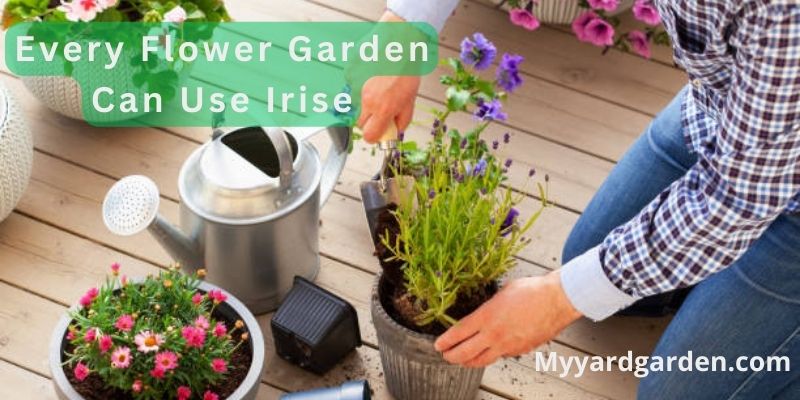A tea garden is a unique and creative way to add a touch of nature to your home. It is a great way to bring beauty and health benefits to your home.
Creating A Tea Garden
Creating a tea garden can be an exciting and rewarding experience. It is a great way to enjoy nature’s beauty and a perfect opportunity to grow your tea plants, create unique blends of flavors and explore the art of brewing loose-leaf tea.
Whether you’re just starting or have been gardening for years, these tips will help you create your successful tea garden.
Research And Planning
Researching and planning are key to creating a successful tea garden.
Choosing The Right Location
Climate, soil type, and access to water are all important factors when selecting a location for a tea garden.
Temperature is especially important as some tea plants require warmer temperatures while others prefer cooler climates.
The soil type should also be considered when selecting a site: some types of tea may require acidic or alkaline soils to grow optimally.
Additionally, ensure easy access to water sources such as wells or irrigation systems since tea plants need regular watering.
Researching Different Types Of Tea Plants
Once the ideal location has been selected, it’s time to research which types of teas would be best suited for that particular location.
This can include researching the individual characteristics of each plant, such as its maturation rate, hardiness, flavor profile, and the ideal environment for each type of tea.
Planning The Layout And Design
Once the types of teas have been chosen, it’s time to plan out the design for the garden. This should include mapping out where each tea plant will be placed about one and how many plants there will be.
Depending on the size of the garden, pathways or walkways can also be planned out so that visitors can easily access different sections of the garden without disturbing any of the plants.
Additionally, consider adding benches or other seating areas so visitors can enjoy your newly created tea garden. By taking the time to research and plan, your tea garden will be sure to thrive.
With careful consideration of factors such as climate, soil type, and access to water, you’ll create a sustainable and beautiful outdoor space perfect for producing high-quality teas.
Preparing the Site
Once you’ve done your research and planned the design, it’s time to start preparing the site.
Clearing The Land
Before planting tea plants, clear away debris or rocks that may inhibit growth. Additionally, remove any weeds or other plants that might compete for water and nutrients in the soil.
Amending The Soil
Organic matter such as compost can be added to help improve soil quality and adjust its pH levels for optimal plant growth.
In addition to adjusting pH levels, adding organic matter will provide beneficial microorganisms that will help break down organic material into usable nutrients for your tea plants.
Installing Irrigation Or Drainage Systems
If your chosen location has limited access to water, consider installing drip irrigation or a sprinkler system. Additionally, ensure adequate drainage so excess rainwater can flow properly from the garden.
By ensuring your tea plants have access to proper hydration and drainage, you’ll create an environment where they can thrive.
By following these steps, you’ll be well on your way to creating a thriving tea garden. With careful planning and preparation of the site, you’ll be able to produce high-quality teas for years to come.
Planting And Establishment
Now that you’ve prepared the site, it’s time to start planting.
Obtaining And Planting The Tea Plants
Research reputable nurseries or growers in your area who can provide high-quality tea plants for your garden.
Before purchasing, double-check with them to ensure the plants are suited for your particular soil type and climate.
Additionally, confirm that they have been tested for pests, diseases, or other issues that could affect their growth. Once you’ve purchased the plants, plant them according to your design layout and water them well.
Caring For The Plants During Establishment
Regularly water and fertilize newly planted teas depending on the weather conditions. Additionally, prune the tea plants to shape them as desired and remove any dead leaves or branches.
Monitoring For Pests And Diseases
Inspect your tea garden regularly for any signs of pests or disease. If you notice any issues, take action quickly to ensure that the problem does not spread to other plants in the garden.
Keeping a close eye on the health of your plants from the beginning will help ensure that your tea garden is productive and successful for years to come.
By following these steps and taking extra care when it comes to planting and establishing your tea garden, you’ll be well on your way to creating a beautiful outdoor space perfect for producing high-quality teas.
Harvesting and Processing
Once your tea plants are established and flourishing, it’s time to start harvesting the leaves.
Monitoring For Maturity
Monitor the growth of your tea plants by keeping a close eye on their leaf size and color. When the leaves reach optimal maturity, they’re ready to be harvested.
Harvesting According To Proper Techniques
Harvesting the leaves correctly is essential to ensure you receive high-quality teas from your garden.
To properly harvest tea leaves, use sharp scissors or pruners so as not to damage them, then collect them into a basket or other container immediately after cutting them off the plant. Do not leave any cut leaves lying on the ground, as these may degrade quickly and lose flavor.
Processing The Leaves To Make Tea
Once you have harvested the leaves, it’s time to process them into tea.
The most common methods for processing tea are steaming, rolling, and drying. After processing, the leaves can be packaged and stored in an airtight container until ready to be consumed.
By following these steps and using proper techniques when harvesting your tea leaves, you’ll be sure to produce high-quality teas from your garden.
Maintaining The Tea Garden
Maintaining a tea garden requires regular attention and care to ensure that your plants are healthy and productive.
This includes monitoring the plants for pests and diseases, providing adequate water and fertilizer, pruning branches as needed, and improving the garden when necessary.
Watering
Watering is an important part of maintaining a tea garden. The goal is to provide enough water, so the soil stays moist but not wet; too much or too little can damage the plants.
It’s best to water early in the morning before it gets hot, allowing time for the moisture to be absorbed by the soil before evaporating in the heat.
Additionally, it would help if you kept an eye out for signs of wilting or yellowing leaves, which could indicate the plants need additional water.
Fertilization
Fertilization is also an important part of maintaining a tea garden. Tea plants require specific nutrients to stay healthy and productive.
Using a fertilizer specifically designed for tea plants or a balanced blend of nitrogen, phosphorus, and potassium is best.
Additionally, it would help if you kept in mind that too much fertilizer can damage the plants and the environment, so it’s important to follow the instructions on the label carefully and not over-fertilize.
Pruning
Pruning is another important task when it comes to maintaining your tea garden.
Pruning helps control growth by removing dead or diseased branches and trimming back overly long branches or stems that the tea leaves can weigh down.
This helps keep your plants healthy and productive by ensuring they receive adequate light, air circulation, and nutrients.
Regularly Evaluate
Finally, it’s important to evaluate your garden and make improvements as necessary regularly.
This may involve adding additional soil or mulch to improve drainage, replacing old or worn-out tools with new ones, or adding more shade if the sun is too intense. Monitoring and evaluating your garden regularly ensures it stays in top shape for many years to come.
Maintaining a tea garden requires regular care and monitoring, but the result is well worth it. You can enjoy fresh tea from your garden for years with proper attention.
Benefits And Joys Of Creating A Tea Garden
Growing a tea garden offers numerous benefits beyond providing an enjoyable hobby.
Reduce Stress
Tea gardens are a great way to reduce stress and promote relaxation; they provide a peaceful setting that allows individuals to create something with their own hands while also nurturing their environment.
Tea gardens allow for experimentation with different varieties of tea leaves, resulting in unique cups of tea and new flavor combinations that cannot be found elsewhere.
Beneficial For Mental Health
Additionally, growing a tea garden is beneficial for mental health as it provides a place of refuge and can help clear the mind.
Since caring for plants has been scientifically proven to lower stress levels, creating a tranquil atmosphere with fresh tea plants can be especially calming.
This activity also helps develop patience, attention to detail, problem-solving abilities, creativity, and critical thinking.
Beneficial For The Environment
Tea gardens are also beneficial for the environment. Tea plants absorb carbon dioxide, reducing air pollution and helping reduce the effects of global warming.
Also, tea gardens can be used as a form of natural pest control; they provide a habitat where birds and insects can feed on pests that would otherwise be harmful to crops. Finally, growing tea plants at home ensure that only organic, pesticide-free teas are enjoyed.
Overall, creating a tea garden is an enjoyable activity with numerous benefits beyond just enjoying delicious cups of tea.
It is an opportunity to take some time away from the hustle and bustle of everyday life while also taking care of nature in a positive way.
With careful planning and dedication, anyone can enjoy all the joys of creating their tea garden.
Conclusion
Creating a tea garden is an exciting way to grow and enjoy your tea. With careful planning and preparation, you’ll be able to create a thriving environment in which your tea plants can thrive.
Planting, establishing, harvesting, and processing the leaves according to proper techniques will help ensure that you get the most out of your tea garden.
By following these steps, you’ll be sure to produce high-quality teas for years to come.



